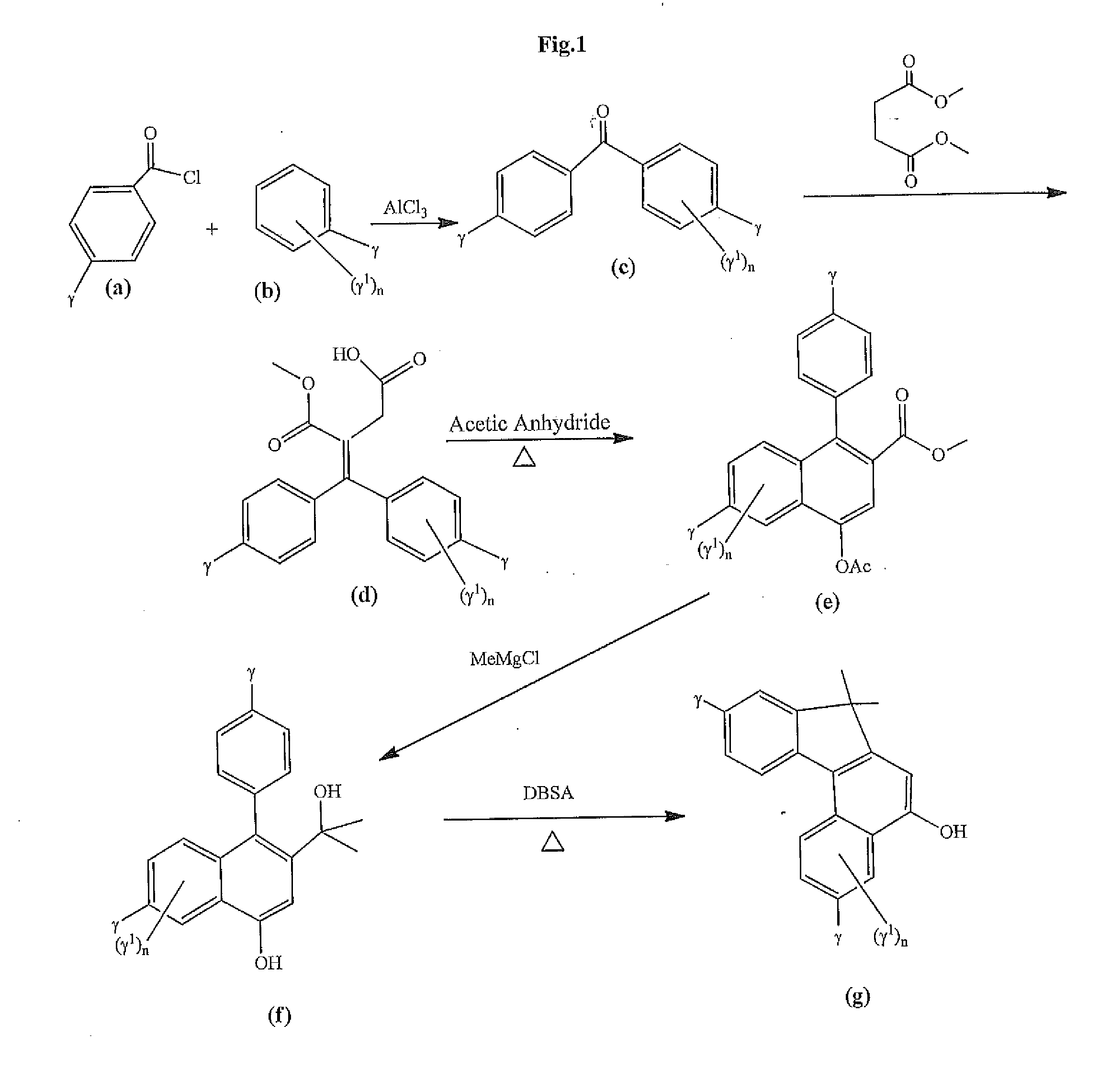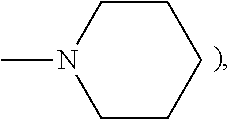Photochromic materials that include 6-amino substituted indeno-fused naphthopyrans
a technology of photochromic materials and indenofurane, applied in the field of photochromic materials, can solve the problems of insufficient use of conventional photochromic materials, inability to adequately undergo the transformation from closed-form (clear) to open-form (colored) within the passenger, and the limited amount of photochromic materials that may be used or incorporated into an articl
- Summary
- Abstract
- Description
- Claims
- Application Information
AI Technical Summary
Benefits of technology
Problems solved by technology
Method used
Image
Examples
example 1
Step 1
[0128]2-Phenoxyethanol (34.5 g) and acetyl chloride 19.5 g) were added to 200 ml of methylene chloride in a 500 mL flask. The mixture was stirred at ice bath temperature while triethyl amine (25 g) was added dropwise. On completion of the addition, the mixture was allowed to warm to about 23° C. and subsequently was poured into 1 liter of water. The organic layer was separated, washed twice with 100 mL portions of water, and the solvent removed on a rotary evaporator. The resulting product, 1-acetoxy-2-phenoxyethane, had crystallized in the flask. The solid was suction filtered, washed with two 50 mL portions of hexane and dried to yield 32 g of product that was used in the next step without further purification.
Step 2
[0129]The product of Step 1 was dissolved in 200 mL of methylene chloride in a reaction flask with stirring along with 42 g of anisoyl chloride. While maintaining the temperature at 15-20° C., tin (IV) chloride (130 g) was added via syringe over a one hour period...
example 3
[0135]Morpholine (0.53 grams, 1.10 eq.) was weighed into a 250 mL dry reaction flask. Dry tetrahydrofuran (100 mL) was added to the reaction flask and stirred under a nitrogen atmosphere at room temperature. n-Butyl lithium (2.5 M in hexanes, 2.42 mL) was added dropwise to the reaction mixture over a 5 minute period. 3,3-Bis-(4-methoxyphenyl)-6,11-difluoro-13,13-dimethyl-3H,13H-indeno[2,1-f]naphtho[1,2-b]pyran (3.0 g) the product of Example 1 of U.S. Pat. No. 7,557,751 the disclosure of which is incorporated herein by reference, was added in portions over a 5-minute period to the reaction mixture. The color of the reaction mixture turned to deep brown and then deep green. The resulting reaction mixture was stirred at room temperature for 4 hours and morpholine (2.0 grams) and 10.0 mL of n-butyl lithium (2.5 M in hexanes) were added. The resulting reaction mixture was refluxed for about 64 hours. After cooling to room temperature, the reaction mixture was poured into 400 mL of a satu...
example 4
[0136]Morpholine (4.60 grams, 2.0 eq.) was weighed into a 500 mL dry reaction flask. dTHF (200 mL) was added to the reaction flask and stirred under a nitrogen atmosphere at room temperature. n-Butyl lithium (2.0 M in hexanes, 21 mL) was added dropwise to the reaction mixture over a 10-minute period. 3-(4-Morpholinophenyl)-3-phenyl-6,11-difluoro-13,13-dimethyl-3H,13H-indeno[2′,3′:3,4]naphtho[1,2-b]pyran (15.0 grams) the product of Example 3 of U.S. Pat. No. 7,556,751, which disclosure is incorporated herein by reference, was added in portions over a 5-minute period to the reaction mixture. The color of the reaction mixture turned to deep green. The resulting mixture was heated for 3 hours at 45° C. After cooling to room temperature, the reaction mixture was poured into 250 mL of saturated NaCl aqueous solution. Diethyl ether (100 mL) and 20 mL of 10% hydrochloric acid solution were added and the resulting mixture was extracted with 200 mL of ethyl acetate. The recovered organic laye...
PUM
 Login to View More
Login to View More Abstract
Description
Claims
Application Information
 Login to View More
Login to View More - R&D
- Intellectual Property
- Life Sciences
- Materials
- Tech Scout
- Unparalleled Data Quality
- Higher Quality Content
- 60% Fewer Hallucinations
Browse by: Latest US Patents, China's latest patents, Technical Efficacy Thesaurus, Application Domain, Technology Topic, Popular Technical Reports.
© 2025 PatSnap. All rights reserved.Legal|Privacy policy|Modern Slavery Act Transparency Statement|Sitemap|About US| Contact US: help@patsnap.com



